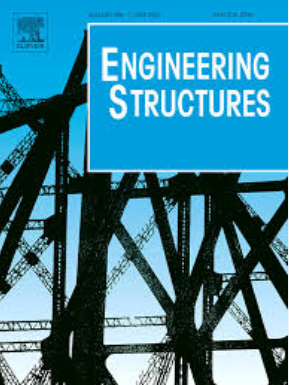递归DeepONet非线性动力学代理建模及其在实时混合仿真中的应用
IF 5.6
1区 工程技术
Q1 ENGINEERING, CIVIL
引用次数: 0
摘要
介绍了一种递归DeepONet方法用于实时混合仿真(RTHS)的非线性动态响应预测。RTHS是复杂结构动力分析的重要技术,包括实验子结构和数值子结构。RTHS的一个关键挑战是实时NS计算,特别是在处理复杂的非线性动力学时。所提出的递归DeepONet可逐步预测非线性响应,是一种适合于神经网络的替代模型。本研究首先验证了基于NS状态转移方程的DeepONet的适用性。然后,介绍了DeepONet的基本结构和递归计算格式,并对递归累积误差界进行了评估。以某3层非线性基准建筑为例进行了分析。对训练后的DeepONet递归性能进行了评价,并与LSTM的递归性能进行了比较,结果表明该算法具有较高的预测精度和计算效率。在一个20层的基准结构上进一步验证了所提出的方法。最后进行了虚拟RTHS实验,讨论了信号噪声和时间延迟对DeepONet预测精度的影响。分析了采用先进控制方法补偿时延的RTHS整体性能,强调了DeepONet在增强RTHS应用方面的潜力。本文章由计算机程序翻译,如有差异,请以英文原文为准。
Recursive DeepONet for surrogate modelling of nonlinear dynamics and its application in real-time hybrid simulation
This study introduces a recursive DeepONet method for predicting nonlinear dynamic response in real-time hybrid simulation (RTHS). RTHS is an essential technique for dynamic analysis of complex structures, involving experimental substructure and numerical substructure (NS). A key challenge in RTHS is the real-time NS computation, particularly when dealing with complex nonlinear dynamics. The proposed recursive DeepONet predicts the nonlinear response step by step, making it a suitable surrogate model for NS. This study first validated the applicability of DeepONet based on the NS state transition equation. Then, the basic architecture and recursive calculation format of DeepONet were presented, and the recursive cumulative error bound was evaluated. A case study of a 3-story nonlinear benchmark building was conducted. The trained DeepONet’s recursive performance was evaluated and compared with that of LSTM, showing superior prediction accuracy and computation efficiency. The proposed method was further validated on a 20-story benchmark structure. Finally, virtual RTHS was performed, and the effects of signal noise and time delay on DeepONet prediction accuracy were discussed. The overall RTHS performance with advanced control methods to compensate for time delay was analyzed, highlighting the potential of DeepONet in enhancing RTHS applications.
求助全文
通过发布文献求助,成功后即可免费获取论文全文。
去求助
来源期刊

Engineering Structures
工程技术-工程:土木
CiteScore
10.20
自引率
14.50%
发文量
1385
审稿时长
67 days
期刊介绍:
Engineering Structures provides a forum for a broad blend of scientific and technical papers to reflect the evolving needs of the structural engineering and structural mechanics communities. Particularly welcome are contributions dealing with applications of structural engineering and mechanics principles in all areas of technology. The journal aspires to a broad and integrated coverage of the effects of dynamic loadings and of the modelling techniques whereby the structural response to these loadings may be computed.
The scope of Engineering Structures encompasses, but is not restricted to, the following areas: infrastructure engineering; earthquake engineering; structure-fluid-soil interaction; wind engineering; fire engineering; blast engineering; structural reliability/stability; life assessment/integrity; structural health monitoring; multi-hazard engineering; structural dynamics; optimization; expert systems; experimental modelling; performance-based design; multiscale analysis; value engineering.
Topics of interest include: tall buildings; innovative structures; environmentally responsive structures; bridges; stadiums; commercial and public buildings; transmission towers; television and telecommunication masts; foldable structures; cooling towers; plates and shells; suspension structures; protective structures; smart structures; nuclear reactors; dams; pressure vessels; pipelines; tunnels.
Engineering Structures also publishes review articles, short communications and discussions, book reviews, and a diary on international events related to any aspect of structural engineering.
 求助内容:
求助内容: 应助结果提醒方式:
应助结果提醒方式:


